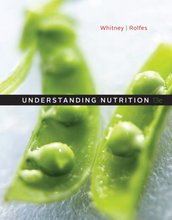This is completed downloadable of Solution Manual for Basic Chemistry, 8th Edition

Product Details:
- ISBN-10 : 128545314X
- ISBN-13 : 978-1305298057
- Author:
The Eighth Edition of Zumdahl and DeCoste’s best-selling INTRODUCTORY CHEMISTRY: A FOUNDATION combines enhanced problem-solving structure with substantial pedagogy to enable students to become strong independent problem solvers in the introductory course and beyond. Capturing student interest through early coverage of chemical reactions, accessible explanations and visualizations, and an emphasis on everyday applications, the authors explain chemical concepts by starting with the basics, using symbols or diagrams, and conclude by encouraging students to test their own understanding of the solution. This step-by-step approach has already helped hundreds of thousands of students master chemical concepts and develop problem-solving skills. The book is known for its focus on conceptual learning and for the way it motivates students by connecting chemical principles to real-life experiences in chapter-opening discussions and “Chemistry in Focus” boxes.
Table of Content:
- Chapter 1: Chemistry: An Introduction
- 1-1 Chemistry: An Introduction
- 1-2 What Is Chemistry?
- 1-3 Solving Problems Using a Scientific Approach
- 1-4 The Scientific Method
- 1-5 Learning Chemistry
- Chapter 1 Review
- Chapter 2: Measurements and Calculations
- 2-1 Scientific Notation
- 2-2 Units
- 2-3 Measurements of Length, Volume, and Mass
- 2-4 Uncertainty in Measurement
- 2-5 Significant Figures
- 2-6 Problem Solving and Dimensional Analysis
- 2-7 Temperature Conversions: An Approach to Problem Solving
- 2-8 Density
- Chapter 2 Review
- Chapter 3: Matter
- 3-1 Matter
- 3-2 Physical and Chemical Properties and Changes
- 3-3 Elements and Compounds
- 3-4 Mixtures and Pure Substances
- 3-5 Separation of Mixtures
- Chapter 3 Review
- Cumulative Review Chapters 1-3
- Chapter 4: Chemical Foundations: Elements, Atoms, and Ions
- 4-1 The Elements
- 4-2 Symbols for the Elements
- 4-3 Dalton’s Atomic Theory
- 4-4 Formulas of Compounds
- 4-5 The Structure of the Atom
- 4-6 Introduction to the Modern Concept of Atomic Structure
- 4-7 Isotopes
- 4-8 Introduction to the Periodic Table
- 4-9 Natural States of the Elements
- 4-10 Ions
- 4-11 Compounds That Contain Ions
- Chapter 4 Review
- Chapter 5: Nomenclature
- 5-1 Naming Compounds
- 5-2 Naming Binary Compounds That Contain a Metal and a Nonmetal (Types I and II)
- 5-3 Naming Binary Compounds That Contain Only Nonmetals (Type III)
- 5-4 Naming Binary Compounds: A Review
- 5-5 Naming Compounds That Contain Polyatomic Ions
- 5-6 Naming Acids
- 5-7 Writing Formulas from Names
- Chapter 5 Review
- Cumulative Review Chapters 4-5
- Chapter 6: Chemical Reactions: An Introduction
- 6-1 Evidence for a Chemical Reaction
- 6-2 Chemical Equations
- 6-3 Balancing Chemical Equations
- Chapter 6 Review
- Chapter 7: Reactions in Aqueous Solutions
- 7-1 Predicting Whether a Reaction Will Occur
- 7-2 Reactions in Which a Solid Forms
- 7-3 Describing Reactions in Aqueous Solutions
- 7-4 Reactions That Form Water: Acids and Bases
- 7-5 Reactions of Metals with Nonmetals (Oxidation-Reduction)
- 7-6 Ways to Classify Reactions
- 7-7 Other Ways to Classify Reactions
- Chapter 7 Review
- Cumulative Review Chapters 6-7
- Chapter 8: Chemical Composition
- 8-1 Counting by Weighing
- 8-2 Atomic Masses: Counting Atoms by Weighing
- 8-3 The Mole
- 8-4 Learning to Solve Problems
- 8-5 Molar Mass
- 8-6 Percent Composition of Compounds
- 8-7 Formulas of Compounds
- 8-8 Calculation of Empirical Formulas
- 8-9 Calculation of Molecular Formulas
- Chapter 8 Review
- Chapter 9: Chemical Quantities
- 9-1 Information Given by Chemical Equations
- 9-2 Mole-Mole Relationships
- 9-3 Mass Calculations
- 9-4 The Concept of Limiting Reactants
- 9-5 Calculations Involving a Limiting Reactant
- 9-6 Percent Yield
- Chapter 9 Review
- Cumulative Review Chapters 8-9
- Chapter 10: Energy
- 10-1 The Nature of Energy
- 10-2 Temperature and Heat
- 10-3 Exothermic and Endothermic Processes
- 10-4 Thermodynamics
- 10-5 Measuring Energy Changes
- 10-6 Thermochemistry (Enthalpy)
- 10-7 Hess’s Law
- 10-8 Quality versus Quantity of Energy
- 10-9 Energy and Our World
- 10-10 Energy as a Driving Force
- Chapter 10 Review
- Chapter 11: Modern Atomic Theory
- 11-1 Rutherford’s Atom
- 11-2 Electromagnetic Radiation
- 11-3 Emission of Energy by Atoms
- 11-4 The Energy Levels of Hydrogen
- 11-5 The Bohr Model of the Atom
- 11-6 The Wave Mechanical Model of the Atom
- 11-7 The Hydrogen Orbitals
- 11-8 The Wave Mechanical Model: Further Development
- 11-9 Electron Arrangements in the First Eighteen Atoms on the Periodic Table
- 11-10 Electron Configurations and the Periodic Table
- 11-11 Atomic Properties and the Periodic Table
- Chapter 11 Review
- Chapter 12: Chemical Bonding
- 12-1 Types of Chemical Bonds
- 12-2 Electronegativity
- 12-3 Bond Polarity and Dipole Moments
- 12-4 Stable Electron Configurations and Charges on Ions
- 12-5 Ionic Bonding and Structures of Ionic Compounds
- 12-6 Lewis Structures
- 12-7 Lewis Structures of Molecules with Multiple Bonds
- 12-8 Molecular Structure
- 12-9 Molecular Structure: The VSEPR Model
- 12-10 Molecular Structure: Molecules with Double Bonds
- Chapter 12 Review
- Cumulative Review Chapters 10-12
- Chapter 13: Gases
- 13-1 Pressure
- 13-2 Pressure and Volume: Boyle’s Law
- 13-3 Volume and Temperature: Charles’s Law
- 13-4 Volume and Moles: Avogadro’s Law
- 13-5 The Ideal Gas Law
- 13-6 Dalton’s Law of Partial Pressures
- 13-7 Laws and Models: A Review
- 13-8 The Kinetic Molecular Theory of Gases
- 13-9 The Implications of the Kinetic Molecular Theory
- 13-10 Gas Stoichiometry
- Chapter 13 Review
- Chapter 14: Liquids and Solids
- 14-1 Water and Its Phase Changes
- 14-2 Energy Requirements for the Changes of State
- 14-3 Intermolecular Forces
- 14-4 Evaporation and Vapor Pressure
- 14-5 The Solid State: Types of Solids
- 14-6 Bonding in Solids
- Chapter 14 Review
- Chapter 15: Solutions
- 15-1 Solubility
- 15-2 Solution Composition: An Introduction
- 15-3 Solution Composition: Mass Percent
- 15-4 Solution Composition: Molarity
- 15-5 Dilution
- 15-6 Stoichiometry of Solution Reactions
- 15-7 Neutralization Reactions
- 15-8 Solution Composition: Normality
- Chapter 15 Review
- Cumulative Review Chapters 13-15
- Chapter 16: Acids and Bases
- 16-1 Acids and Bases
- 16-2 Acid Strength
- 16-3 Water as an Acid and a Base
- 16-4 The pH Scale
- 16-5 Calculating the pH of Strong Acid Solutions
- 16-6 Buffered Solutions
- Chapter 16 Review
- Appendix
- Solutions to Self Check Exercises
- Answers to Even-Numbered End-of-Chapter Questions and Exercises
- Answers to Even-Numbered Cumulative Review Exercises
- Index and Glossary





